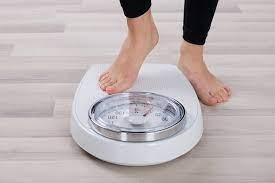Considering your height, what should your ideal body weight be? Find out when obesity starts to affect you
Understanding your appropriate body weight for your height is essential for sustaining a healthy lifestyle. With millions of individuals at danger owing to excessive weight levels, obesity has become a worldwide problem. This article will examine the connection between height and weight as well as strategies for avoiding obesity.
The Value of Maintaining a Healthy Weight
Let’s stress the significance of keeping a healthy weight before getting into the intricacies of optimal body weight. Numerous health issues are linked to obesity, including:
Heart disease, No. 1
Obesity raises the risk of heart disease, including coronary artery disease and hypertension.
2. Diabetes Type 2
A chronic disease with serious health repercussions, type 2 diabetes is mostly brought on by being overweight.
3. Joint Issues
Your joints are strained when you are overweight, which may result in diseases like osteoarthritis.
Sleep Apnea 4.
Fatigue and other health problems may result from sleep apnea, which is significantly increased by obesity.
5. Mental Wellness
Additionally, obesity has an effect on mental health, making sadness and poor self-esteem more likely to occur.
How to Determine Your Optimal Body Weight
There is no formula for calculating your optimal body weight that works for everyone. It entails taking into account a number of variables, such as height, age, gender, and body composition. However, the Body Mass Index (BMI) is a frequently used technique.
The BMI is what?
Based on a person’s height and weight, their BMI assigns them to one of many weight groups. The formula used to compute it is as follows:
BMI is calculated as follows: (Weight in kg) / (Height in m2)
The BMI classifications are broken down as follows:
BMI less than 18.5 indicates underweight.
BMI in the normal range is between 18.5 and 24.9
BMI between 25 and 29.9 is overweight
obesity: a BMI of 30 or above
How to Calculate Your Ideal Weight Using BMI
By rearranging the equations, you may get your optimum body weight using your BMI as follows:
BMI times (Height in meters2) yields the ideal weight (kg).
Let’s examine an illustration: Your ideal weight would be: If your height is 1.75 meters (175 cm) and you wish to have a BMI of 22, which is within the normal weight range:
22 x 1.75 2 = 67.375 kg is the ideal weight in kilograms.
This formula gives you a ballpark figure for your optimal body weight, but keep in mind that personal characteristics like muscle mass and body composition also matter.
Eliminating obesity
Knowing your optimal body weight is only one part of preventing obesity. It involves establishing a healthy lifestyle. Here are some helpful pointers:
1. A wholesome diet
Eat a nutritious, balanced diet that is high in whole grains, fruits, vegetables, lean meats, and healthy fats. Limit your intake of fatty and sugary meals.
2. Consistent Exercise
Take part in regular exercise. Aim for 150 minutes or more per week of aerobic activity at a moderate level.
3. Portion Management
Pay attention to portion sizes. When dining out, particularly, refrain from overeating.
4. Water intake
Drink a lot of water throughout the day to stay hydrated. Sometimes, hunger and thirst are confused.
5. Sleep
Give excellent sleep a high priority since insufficient sleep may interfere with hormones that control hunger and raise the risk of obesity.
6. Stress reduction
To avoid emotional eating, try stress-reduction exercises like yoga, meditation, or deep breathing. In conclusion, sustaining a healthy lifestyle and avoiding obesity-related health conditions need an awareness of the link between your height and appropriate body weight. Even while BMI serves as a useful benchmark, it’s crucial to speak with a healthcare provider for individualized guidance on obtaining and maintaining a healthy weight. You may actively work towards a better and happier life by adopting a balanced diet, consistent exercise, and healthy behaviors.







